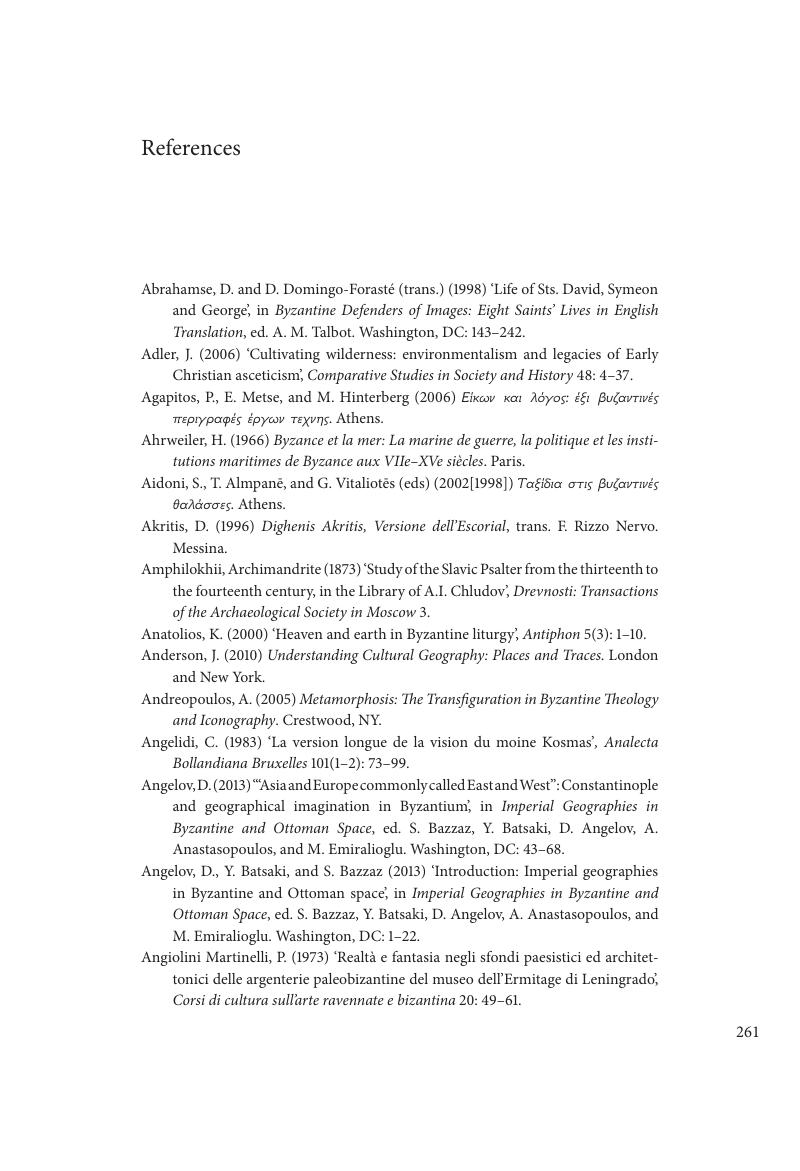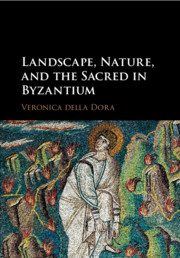Book contents
- Landscape, Nature, and the Sacred in Byzantium
- Frontispiece
- Landscape, Nature, and the Sacred in Byzantium
- Copyright page
- Dedication
- Dedication
- Contents
- Plates
- Figures
- Maps
- Preface
- Book part
- Glossary
- Introduction: placingtopographies
- Part I Topos andcosmos
- Part II Land
- Part III Rock
- Part IV Water
- Epilogue
- References
- Index
- References
References
Published online by Cambridge University Press: 05 February 2016
- Landscape, Nature, and the Sacred in Byzantium
- Frontispiece
- Landscape, Nature, and the Sacred in Byzantium
- Copyright page
- Dedication
- Dedication
- Contents
- Plates
- Figures
- Maps
- Preface
- Book part
- Glossary
- Introduction: placingtopographies
- Part I Topos andcosmos
- Part II Land
- Part III Rock
- Part IV Water
- Epilogue
- References
- Index
- References
Summary

- Type
- Chapter
- Information
- Landscape, Nature, and the Sacred in Byzantium , pp. 261 - 283Publisher: Cambridge University PressPrint publication year: 2016



